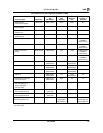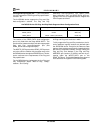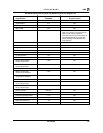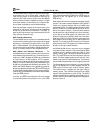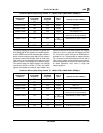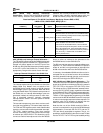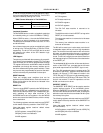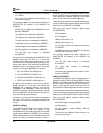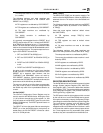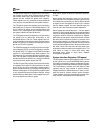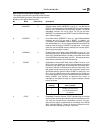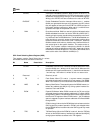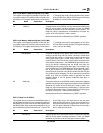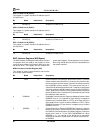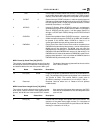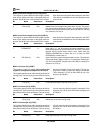
P R E L I M I N A R Y
AMD
75Am79C930
The sleep state machine is returned to its idle state
(i.e., awake).
The following registers and state machines are
UNAFFECTED by assertion of the PCMCIA COR
SRESET bit of COR[7]:
All TIR registers are unaffected by COR SRESET.
All TCR registers are unaffected by COR SRESET.
All TAI state machines are unaffected by
COR SRESET.
The 80188 controller is unaffected by
COR SRESET.
It is generally recommended that the SRESET bit of
COR[7] should
not
be SET to a 1 unless the CORESET
bit of SIR0[6] has first been set to a 1. This recommen-
dation is to insure that the memory bus arbitration state
machine is not reset while the 80188 embedded control-
ler is executing an access. The proper sequence for us-
ing the COR SRESET bit should be:
1. SET the CORESET bit SIR0[6] to a 1.
2. SET the COR SRESET bit PCMCIA COR[7] to
a 1.
3. RESET the COR SRESET bit PCMCIA COR[7]
to a 0.
4. RESET the CORESET bit SIR0[6] to a 0.
An option to this procedure is to first insure that the
80188 controller is in the HALT state before the COR
SRESET bit is asserted. Note however, that the
FLASHWAIT and SRAMWAIT values are reset by
COR SRESET; therefore, if 80188 operations are re-
sumed after the COR SRESET has been performed, the
performance of the 80188 may be affected.
The user may decide not to follow these recommenda-
tions, but in such a case, it should be recognized that
the 80188 may suffer from unpredictable behavior as
a result.
ISA PnP RESET
The ISA PnP Configuration Control Register may be
used to reset the Am79C930 device. Writing the value
“111b” to bits two through zero of this register (i.e., bits
[2:0]) will cause an internal RESET pulse to occur within
the Am79C930 device). The RESET pulse will last for 14
CLKIN periods.
This RESET will have the same effect as asserting the
RESET pin of the Am79C930 device, except that, as
stated above, the ISA PnP RESET is limited to a dura-
tion of 14 CLKIN periods.
SRES (TIR0[5])
The SRES bit of TIR0[5] can be used to reset the TAI
section of the Am79C930 device. When the SRES bit is
asserted, then the TAI section of the Am79C930 will
be reset.
The following registers and state machines are RESET
to their default values by assertion of the SRES bit
of TIR0[5]:
(Note that some register locations’ default values
are UNDEFINED)
All TIR registers, except TIR0[7:0] which
is unaffected.
All TCR registers are reset to default values
by SRES.
All TAI state machines are reset to idle states
by SRES.
The following registers and state machines are
UNAFFECTED by assertion of the SRES bit of TIR[5]:
The sleep state machine is unaffected by SRES.
The memory bus arbitration state machine is unaf-
fected by SRES.
All SIR registers are unaffected by SRES.
All MIR registers are unaffected by SRES.
The 80188 controller is unaffected by SRES.
PCMCIA registers are unaffected by SRES.
ISA PnP registers are unaffected by SRES.
The ISA PnP state machine is unaffected by SRES.
REGISTER DESCRIPTIONS
The Am79C930 device has five distinct areas of register
storage: System Interface Register (SIR), MAC Inter-
face Register (MIR), Transceiver Attachment Interface
Unit Register (TIR), Transceiver Attachment Interface
Uniit Configuration Register (TCR), and the PCMCIA (or
ISA Plug and Play) register sets.
The SIR space contains eight registers which are used
by the host driver to control Am79C930 device opera-
tions and to collect status, namely, the General Configu-
ration Register and the Bank Switching Select Register.
The Local Memory Address and Local Memory Data
registers may be used instead of system-memory-
mapped transfers to SRAM and Flash locations in order
to eliminate the need for system memory space alloca-
tion. These registers are only accessible at the system
interface; they are inaccessible from the 80188 core.



